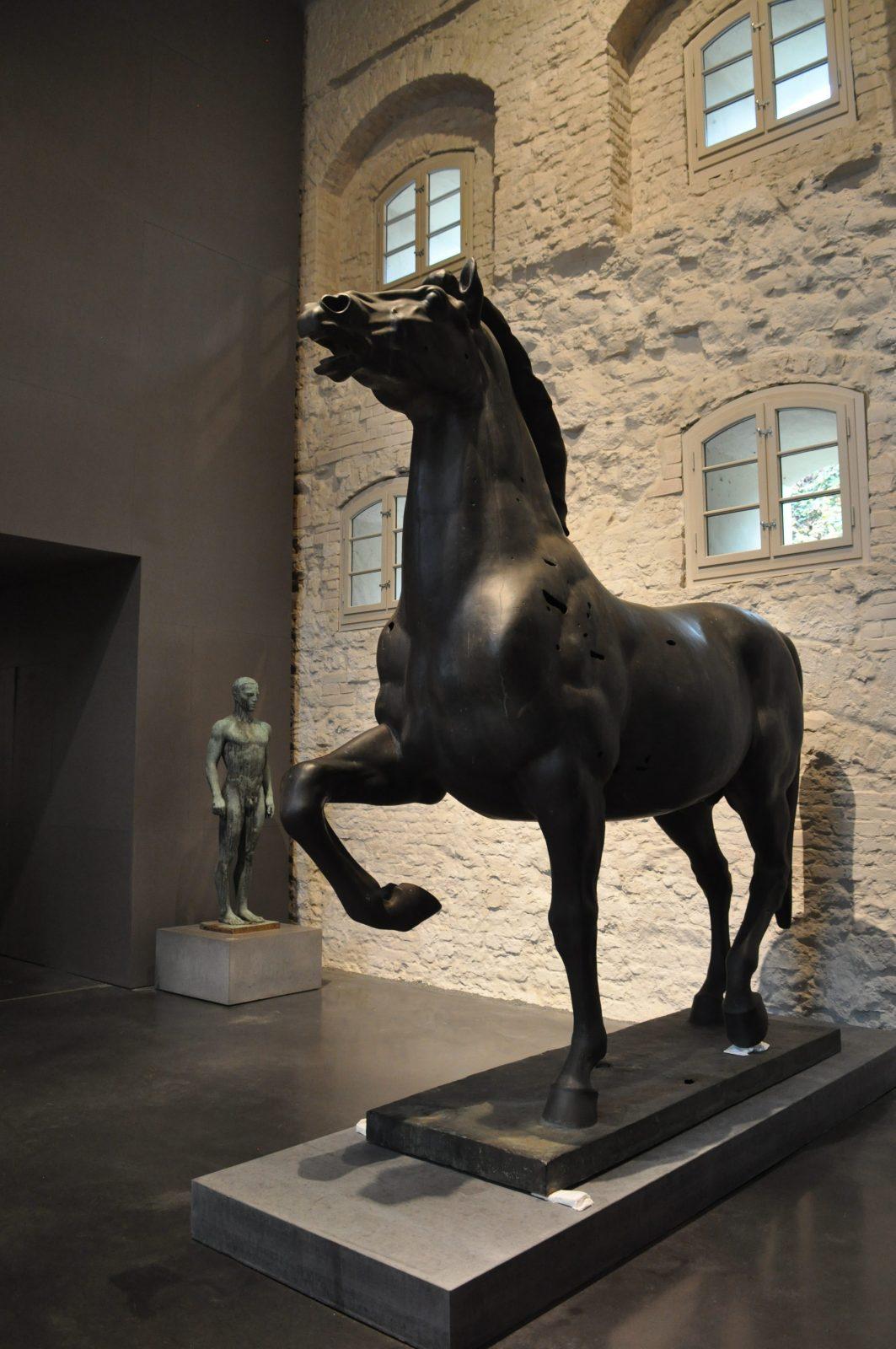Wednesday 11.1.2023 6.00 p.m. - 8.00 p.m.
Price 0 €
Greetings
– Frank Bewig – City Councillor for Culture
– Dr. Klaus Lederer – Senator for Culture and Europe
– Prof. Monika Grütters – Former Minister of State for Culture and the Media
Impulse lectures
– Ambra Frank – Art historian and expert on Nazi Art
– Prof. Stephan Lehnstaedt – Historian and Professor for Holocaust Studies and Jewish Studies at Touro-University Berlin
– Dr. Urte Evert – Director of the Historical Museums Spandau
Since 2015, the so-called Thorak-horses have repeatedly made headlines under titles such as “Nazi-Kunst aus der Reichskanzlei” or “Hitlers Hengste” In that year, the bronze sculptures, which had been considered lost since 1989, resurfaced under adventurous circumstances with a collector and a legal dispute over ownership began.
While the Federal Republic of Germany sued for the return of the objects smuggled out of the GDR, scientists and politicians pleaded for the sculptures, as important representations of a problematic culture of remembrance, to be made accessible to the public through an exhibition. Since the then Minister of State for Culture and Media Monika Grütters announced the transfer of the bronze horses back to Berlin in the summer of 2021, preparations for the appropriate exhibition of these “toxic” sculptures were underway at the Spandau Citadel.
The object history of the Thorak horses is linked to questions of reappraisal, mystification of Nazi art, and the struggle for interpretive sovereignty in public space. One of the horses has now been included in the exhibition “Unveiled. Berlin and its Monuments. There, in the themed room on National Socialism, it complements the historical examination and reappraisal of National Socialist art on buildings as well as in public space. The second horse is displayed in a show depot at the Spandau Citadel alongside other controversial objects of remembrance culture and made accessible in the context of accompanying events. By spatially separating the large bronzes and contextualizing them in different museum spaces, they are neither exaggerated nor hidden.
Their intended overpowering effect is recognizable, but does not unfold. They are now components of the exhibitions at the Citadel, inviting a lively examination of commemoration in a democracy.
